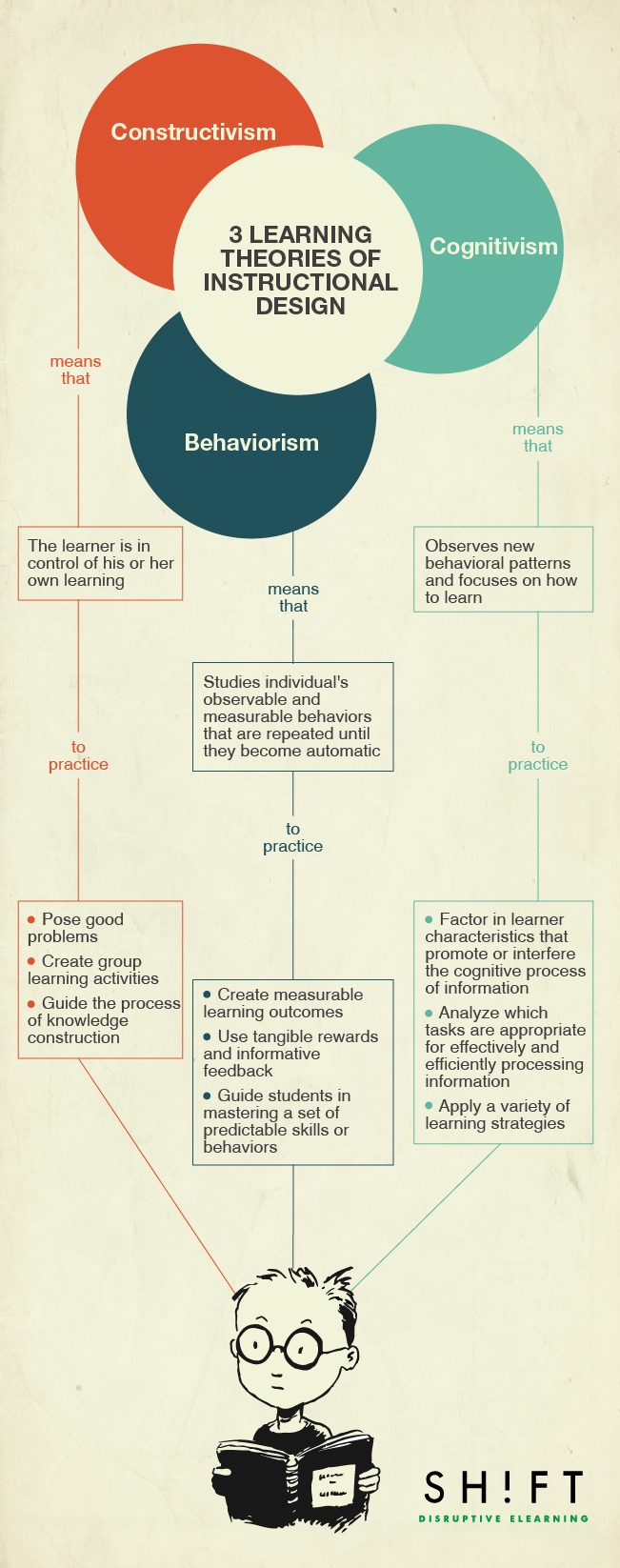3 Learning Theories of Instructional Design Infographic
Of the many eLearning theories that influence the practice, three of them (behaviorism, cognitivism, constructivism) are used by professionals on a daily basis and all of them are concerned with how students are going to learn. The 3 Learning Theories of Instructional Design Infographic helps you understandi each of them, in order to be able to figure out which works well in a learning environment.
Behaviorism
Behaviorism focuses on an individual's observable and measurable behaviors that are repeated until they become automatic. It also deals with how an individual's external environment shapes his or her behavior. Behaviorism is deemed applicable to instructional design when you aim:
- To create measurable and observable learning outcomes among students.
- To use tangible rewards and informative feedback to improve student learning performance.
- To guide students in mastering a set of predictable skills or behaviors.
Cognitivism
Cognitivism observes new behavioral patterns and focuses on the thought process behind the behavior. If you decide to take a cognitive approach to designing your material, be sure to:
- Factor in learner characteristics that may either promote or interfere with the cognitive process of information.
- Consider and analyze which tasks are appropriate for effectively and efficiently processing information.
- Apply a variety of learning strategies that allow learners to connect new information to prior knowledge.
Constructivism
Constructivism places the learner at the center of the learning environment. The learner isn't merely absorbing information passively but is actively involved in constructing knowledge individually. This means knowledge cannot be simply transmitted from one learner to another, so you should:
- pose good problems
- create group learning activities
- guide the process of knowledge construction
You can, of course, combine these theories depending on your goal as an instructional designer, the business objectives of your organization or client organization, the needs of learners, and the subject matter.







You can adjust your cookie preferences here.